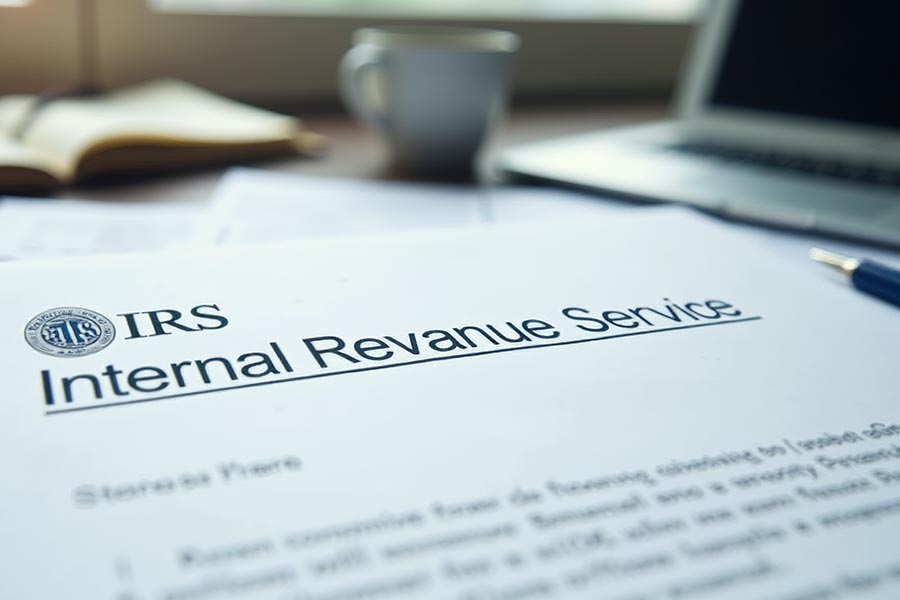3 Urgent IRS Letters You Must Never Ignore
Receiving a letter from the IRS can trigger immediate stress. While the IRS sends out dozens of different notices (identified by codes like CP or LT), most are routine reminders. However, a specific class of letters is a final warning that the IRS is about to take forceful action against your assets.
If you receive one of the following three notices, you are past the point of casual reminders and must act immediately.
1. CP504: The Final Warning Before Seizure
The CP504 notice is one of the most common and urgent letters indicating an Intent to Levy. This is a terrifying letter because it signifies the IRS is done waiting for payment.
| What It Means | What You Must Do Immediately |
| Notice of Intent to Levy: The IRS is warning you that they will seize (levy) your property or assets to satisfy your unpaid tax debt. The most immediate threat is usually the seizure of your state tax refund. | Do Not Wait: You must respond within the deadline provided (usually 30 days) to prevent collection. Ignoring this will lead to the IRS proceeding with levies on any assets they can find. |
| Escalation: This letter is often the third or fourth notice in a series (following CP501 and CP503), meaning the IRS has already tried to collect. | File an Appeal or Resolution: Your primary goal is to stop the levy. You must immediately enter into a formal payment arrangement (like an Installment Agreement or Offer in Compromise) or request a Collection Due Process (CDP) hearing. |
2. CP90 / Letter 1058 (LT11): The Final Levy Notice
While the CP504 threatens a levy, the CP90 (or its counterpart, Letter 1058 / LT11) is the most serious final notice before the IRS executes a levy against your most critical income streams and assets.
| What It Means | What You Must Do Immediately |
| Imminent Seizure: This is the legal notice required by the IRS before they can seize wages, bank accounts, business assets, and, in certain cases, retirement benefits. The CP90 specifically references your right to a hearing before a levy occurs. | Stop the Clock: You have a limited time (typically 30 days from the date on the notice) to file Form 12153 (Request for a Collection Due Process Hearing). Filing this form is the best legal way to temporarily halt the levy and open the door to discussing alternatives. |
| Loss of Control: Once the levy is executed, the bank or your employer is legally obligated to hand over your money to the IRS, and getting it back is extremely difficult. | Gather Financial Records: You need to work with a professional immediately to gather complete financial statements to prepare a resolution proposal (Offer in Compromise, Installment Agreement, or declaration of Currently Not Collectible status). |
3. CP523: Your Payment Plan is Terminated
If you previously set up an Installment Agreement (monthly payment plan) with the IRS to resolve your debt, the CP523 is a sign of danger, indicating you have failed to comply with the terms of the agreement.
| What It Means | What You Must Do Immediately |
| Default: You have likely missed a payment, failed to file a subsequent year’s tax return, or incurred a new tax liability. The IRS is now terminating your agreement. | Reinstate the Agreement: Contact the IRS immediately to see if you can reinstate your agreement. You will likely have to pay a reinstatement fee and make up the missed payments. |
| Return to Square One: Once the agreement is terminated, the IRS will revert to its original collection status, making you eligible again for aggressive collection actions, including the levies threatened by the CP504 and CP90. The IRS has your financial information already, making collection easy. | Get Compliant: Ensure all required tax returns are filed and pay any new tax liability in full. A tax professional can help negotiate the reinstatement or, if necessary, secure a new, more affordable payment arrangement. |
The Critical Next Step: Do Not Go It Alone
These three letters signal that the IRS believes the time for negotiation is over. Your priority is to stop the collection process and establish a new, viable path toward resolution.
If you have received a CP504, CP90, or CP523, a tax professional—such as an Enrolled Agent (EA), a Certified Public Accountant (CPA), or a Tax Attorney—can:
- Stop Levies: Use your legal rights (like the CDP hearing) to halt collection actions.
- Negotiate Resolutions: Determine and negotiate the best tax relief option for your financial situation (OIC, Installment Agreement, or CNC).
- Handle All Communication: Take over all correspondence, ensuring you meet strict IRS deadlines and never miss a critical filing.
Ignoring these letters is the single most expensive mistake you can make. The time to act is the moment you open the envelope.
